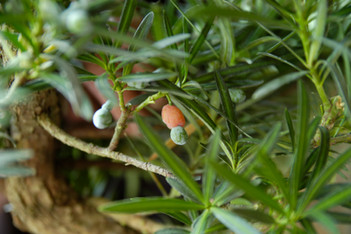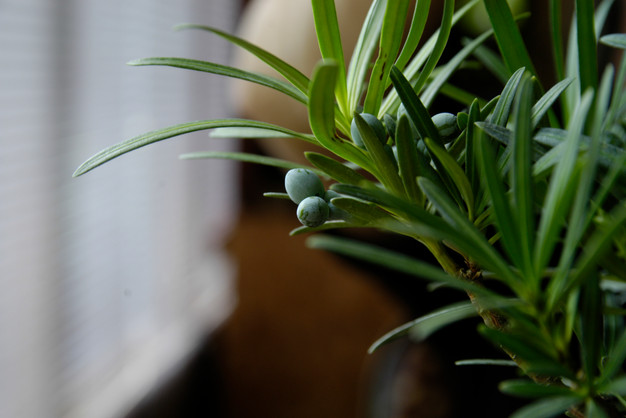Buddhist Pine
- Mark D'Cruz
- Feb 24, 2020
- 2 min read
Podocarpus macrophyllus
Native to South-Eastern China and Southern Japan the Buddhist Pine grows in open thickets in the forest and is found between sea level and 1000 meters. A conifer, it has flat leaf-like needles and an exposed seed on a 2 scale pine. The scales turn pulpy and red and are eaten by birds which then disperse the seeds around. It is revered in Japanese and Chinese Buddist temples from where it gets one of its common names.

Styles and Sizes: The natural adaptability to container growing means that it develops excellent small to large-sized bonsai in almost any style of bonsai.
Position: In the cooler temperate parts of the world it is grown as an indoor bonsai, where it does best in a bright south-facing window or conservatory. While it is mildly frost resistant, it does not like its roots freezing so is best to protect in a temperature-controlled greenhouse where temperate is maintained at above 6°C.
Watering: Podocarpus prefers a dry soil because of its symbiotic relationship with its mycorrhizal fungi. Water thoroughly in the early morning to allow for the bonsai to use the water during the daytime and ensure that the soil has no standing water in it overnight.
Feeding: Fertilise every two weeks from spring to autumn, using a balanced organic liquid fertiliser. During the hottest of summer months discontinue feeding. Supplement with a liquid seaweed + iron tonic a few times a year.
Repotting: It’s not too fussy about its soil type, but need it on the dryer side and well-draining. Younger bonsai may be repotted every year, older bonsai repot when soil shows signs of depleting or bonsai growth has slowed. After repotting best to pace out of direct sunlight, soil surface dries out. Use a free-draining soil mix, 1 part loam, 1 part peat and 2 parts sharp sand. Alternatively, use 1 part Akadama and 1 part Pumice of larger particle size between 6mm and 9mm.
Pruning: In spring on more mature bonsai, buds may be pinched to encourage filling out of pads. In summer let shoot extend fully and lateral shoots begin to set before pruning to leave only three of current years lateral shoots. In autumn prune all terminal stems, leaving only two of the current year’s shoots, by cutting away the thickest of them.
Wiring: Wire between late autumn and winter. Remove wire when growth gets vigorous again in summer.










Comments